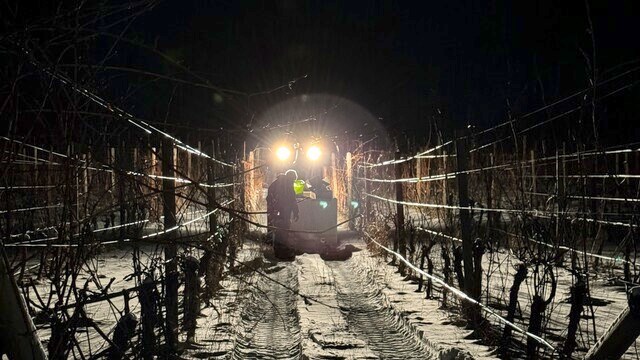It’s the worst he’s ever seen in his more than 45 years in the business.
“I’ve seen winter damage, but never to the extent that I’ve seen and heard about it this year,” said Kelowna West MLA Ben Stewart, whose family runs .
He says solutions are going to have to be found to help the industry that has been hit hard for a third winter in a row.
“The vineyards, they will have some coverage if they have crop insurance, but the other problem is is that the wineries that employ thousands of people, staff and tasting rooms and everything, are going to be having to adjust. And that’s a terrible economic scenario,” adds Stewart.
Most of the crop may have been lost
While the true picture of the damage from -25 C temperatures in mid-January isn’t know yet, the early signs are it could be even worse than was was seen last year and the year before.
“We are just in the process now of doing the bud damage report again to forecast what we can expect in the vineyards. But if it’s worse than it was last year, and we lost 58 per cent of the crop last year, and this freeze is worse, it’s not lining up very well at all,” says Miles Prodan, president and CEO of
“We’ll wait for the report, but its going to be catastrophic. I daresay we may have lost most of the crop.”
From fighting fires to lighting fires
At in West Kelowna, owner Joanna Schlosser said they are still trying to get a handle on the winter damage, “we won’t know for sure until the spring but based on how fast the temperature fell and how cold it was, we are very very worried.”
She says her husband James Schlosser was out in the vineyard last month lighting burn barrels trying to protect the vines from the extreme cold. It difficult to know at this point if it had any impact.
“(It’s) hard to imagine that we spent August putting out fires only to turn around and spend January trying to light them,” said Joanna.
Niche sustained damage during the McDougall Creek wildfire. The fire burned all around the vineyard, scorching some vines and destroying a storage shed. It also burned down part of the fence around the vineyard, allowing wildlife to access the property and each much of the remaining crop.
If there’s no wine to sell, is there a reason to come to the winery?
The long-term impacts of another year of very limited crop is cause for serious concern not just for the wine industry. While there are replant programs available, it takes at least three years for those vines to start producing.
“In the meantime, there are wineries that don’t have grapes to make wine to sell to continue to employ people,” says Prodan. “So Ben is absolutely right. Without those grapes we’ve got a problem with keeping the wineries whole.
“People are already looking at potential layoffs just within the winery and if there’s no wine to sell, is there a reason to come to the winery?”
Much of the Okanagan tourism sector depends on visitors who come for wine tours.
“It’s going to be a big problem,” adds Stewart. “I’m looking for solution myself. And I don’t know what they are, but I think we’re going to have to do something.”




